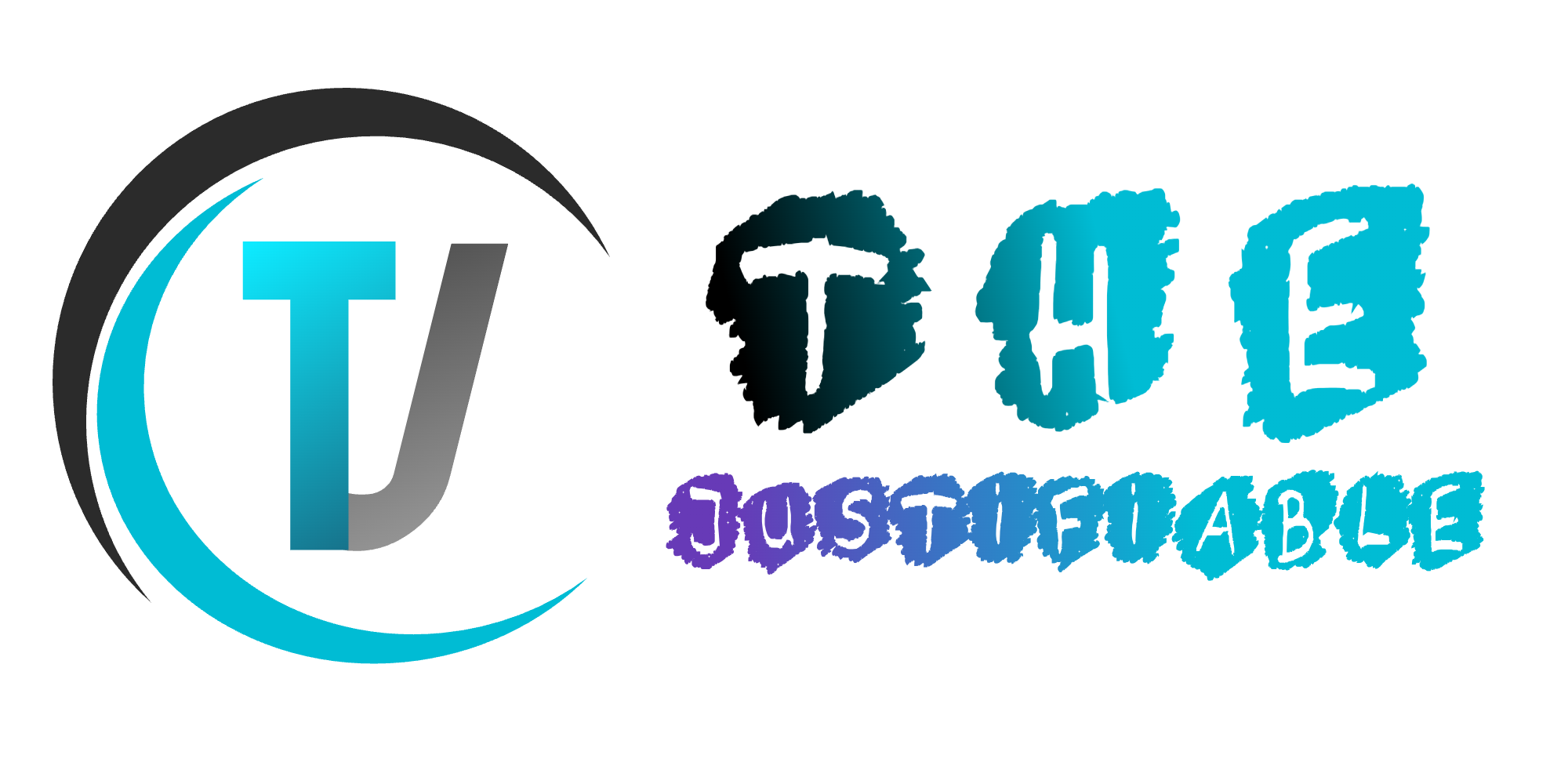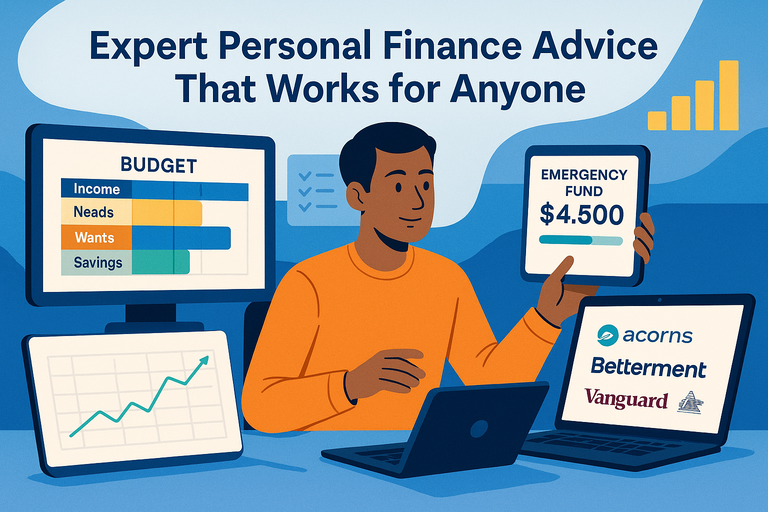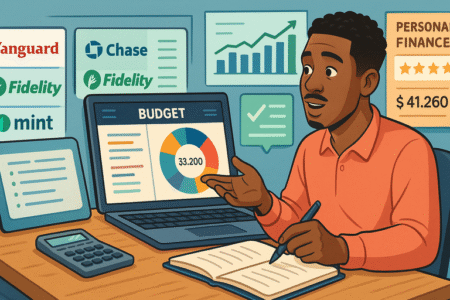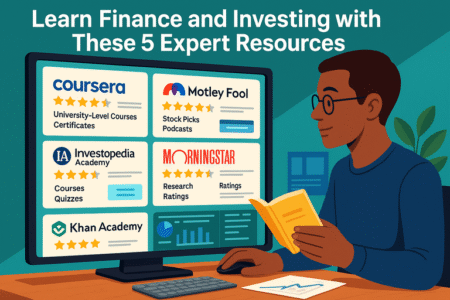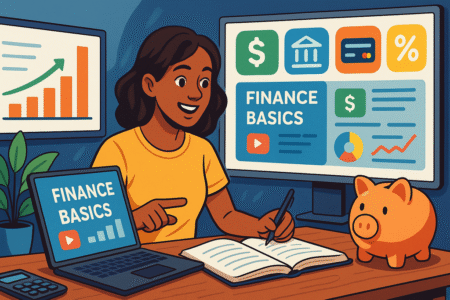Table of Contents
Personal finance advice can feel overwhelming, but it doesn’t have to be complicated. The right strategies can help anyone—no matter their income or stage of life—build stability and grow wealth.
Have you ever wondered what proven steps truly work for everyone, not just financial experts?
This guide breaks down practical advice into clear actions you can actually follow.
Start With A Clear Picture Of Your Finances
Before you can make smart financial decisions, you need to know where your money is going. A clear picture of your finances isn’t just about numbers—it’s about awareness and control.
Think of it like turning on the lights in a messy room; you can’t clean it until you see everything that’s actually there.
Track Every Dollar With A Simple System
Most people underestimate how much they spend. I used to tell myself I wasn’t spending “that much” on food until I added up the takeout receipts. Spoiler: it was enough to cover a plane ticket. That’s why I suggest you track every dollar.
The simplest way to start is with a notebook or spreadsheet—no need to overcomplicate it. Write down what you spend for at least 30 days. If you prefer tech, apps like YNAB (You Need A Budget) or Mint can automatically pull your transactions and categorize them. The key isn’t the tool itself—it’s building the habit of awareness.
Quick tip: When I track manually, I sort spending into just five categories—housing, food, transportation, debt, and everything else. Too many categories can overwhelm you, and you’ll stop tracking. Keep it simple enough that you’ll actually stick with it.
Create A Realistic Budget You Can Stick To
A budget should feel like a supportive guide, not a strict prison. The biggest mistake I see is people cutting everything fun out of their lives. That’s like starting a crash diet—you’ll quit fast.
Here’s a framework that works for almost anyone:
- 50% of income for needs (rent, bills, groceries).
- 30% for wants (dining out, hobbies, travel).
- 20% for savings and debt payoff.
If 50/30/20 doesn’t fit your life, adjust it.
For example, if rent takes up more than half your paycheck, shrink the “wants” category but keep savings as non-negotiable. I believe in budgets that flex with real life, not cookie-cutter charts.
Use Technology To Simplify Money Management
We live in a world where your phone can order groceries, track your steps, and remind you of birthdays—so why not let it help with money too?
Banking apps now show you monthly spending summaries, and many even let you create sub-accounts.
For instance, I use my bank’s “buckets” feature: one for bills, one for travel, one for savings. This way, I don’t accidentally spend rent money on coffee.
Other helpful tools:
- YNAB: Helps you give every dollar a job.
- Mint: Great for auto-tracking and categorizing.
- PocketGuard: Shows you how much you can spend safely today without wrecking your budget.
The trick is to set it up once and let it run in the background. The less you rely on willpower, the easier it is to stay consistent.
Build A Safety Net Through Emergency Savings
Unexpected expenses will happen—car repairs, medical bills, sudden job changes. Without a financial cushion, these moments can turn into debt spirals.
Emergency savings act like a shock absorber for your life.
Decide How Much You Need For True Security
The classic advice is three to six months of living expenses. That’s solid, but it can feel intimidating if you’re just starting.
I recommend aiming for $1,000 first—it’s enough to cover most small emergencies like fixing a broken appliance or covering a surprise bill. Once you hit that, work toward one month of expenses, then keep stacking from there.
A practical way to calculate your personal target:
- Add up your must-have monthly costs (rent, utilities, food, insurance).
- Multiply that number by the number of months you want covered.
- That’s your emergency fund goal.
For example, if your essential costs are $2,000 a month, then a three-month safety net is $6,000. Don’t panic if that sounds high—remember, it’s a marathon, not a sprint.
Automate Savings To Remove Stress And Effort
Here’s the truth: if you wait until the end of the month to save, there will be nothing left. That’s why automation is a game-changer.
Set up an automatic transfer the day after payday. Even $50 per paycheck adds up to $1,300 in a year without you thinking about it. Treat savings like a bill—non-negotiable.
I like using high-yield online savings accounts because they make automation easy and earn better interest than traditional banks. Ally, Marcus, and Discover are popular options. You set the transfer once, and the money moves without you lifting a finger.
Store Funds In Accessible, Low-Risk Accounts
An emergency fund should be boring money. Don’t invest it in stocks or crypto—those go up and down, and you need certainty. Keep it somewhere safe and liquid, meaning you can access it quickly without penalties.
The best spots are:
- High-yield savings accounts (HYSA).
- Money market accounts.
- Short-term certificates of deposit (CDs) if you won’t need the money for a year.
I personally keep mine in an online savings account that pays interest but still lets me transfer money within a day or two. That balance between safety and accessibility is the sweet spot.
Pro tip: Don’t wait until your finances “feel stable” to start an emergency fund. The stability comes from having one, not the other way around.
Manage Debt Without Feeling Overwhelmed
Debt can feel like carrying a heavy backpack you can’t put down. The weight slows you down and makes everything harder.
But here’s the truth: you can lighten that load step by step. Managing debt isn’t about beating yourself up—it’s about building a plan you can actually follow without burning out.
Prioritize High-Interest Balances First
Not all debt is created equal. A credit card charging 20% interest is far more dangerous than a student loan at 5%. High-interest balances grow like weeds, choking out your financial progress.
Start by writing down all your debts, including balances, interest rates, and minimum payments. Then, circle the ones with the highest interest. Those are your “financial emergencies.”
Here’s how to tackle them:
- Keep paying minimums on everything to avoid late fees.
- Throw every extra dollar at the highest-interest balance.
- Once that’s gone, roll that payment into the next one.
Even an extra $50 a month toward a 20% interest card can save you thousands in the long run. I’ve seen people knock years off repayment just by focusing on the right order.
Use Debt Snowball Or Avalanche Strategies Wisely
There are two popular approaches:
- Snowball: Pay off the smallest balance first for quick wins. It’s motivating and keeps momentum high.
- Avalanche: Pay off the highest interest first to save the most money overall.
Which one should you use? Honestly, it depends on your personality. If you’re motivated by fast results, snowball might be best. If you’re a numbers person who wants to minimize costs, avalanche wins.
I suggest blending the two. Start with one small debt to get a “win,” then switch to avalanche for maximum savings. That balance of motivation and math can keep you going when the journey feels long.
Avoid Common Traps That Lead To More Debt
Here’s where people slip up:
- Consolidating debt without changing spending habits (the balance creeps back).
- Paying only the minimum, which means you’re mostly covering interest.
- Using “buy now, pay later” as if it’s free money—it’s still debt.
One practical trick I use is freezing credit cards in a drawer (literally, in the freezer once). It stops impulse swipes while you’re focusing on repayment. Pair that with a small emergency fund, and you’ll be less tempted to reach for credit when life throws surprises at you.
Make Smarter Spending Decisions Every Day
Small daily choices make or break your financial health. You don’t have to cut every latte, but you do need awareness and boundaries.
Smarter spending is about aligning money with what actually makes you happy, not what drains your bank account in secret.
Differentiate Wants Versus Needs With Clarity
It sounds simple: needs are essentials, wants are extras. But in real life, it’s blurry. Is a gym membership a want or a need? What about reliable internet?
Here’s a trick: if you can live without it for 30 days and your life keeps running, it’s a want. Housing, food, utilities, transportation, and basic healthcare are true needs. Everything else is negotiable.
I sometimes do a “needs-only month.” For 30 days, I spend only on essentials. It’s eye-opening and helps reset what I value most. When I return to normal spending, I’m more intentional about what’s worth keeping.
Use Cash Or Debit To Control Overspending
There’s real psychology here. Studies show people spend more when swiping a card compared to handing over cash. Cards feel less “real,” while cash makes the trade-off tangible.
If you struggle with overspending, try this:
- Withdraw your fun money in cash each week.
- When it’s gone, it’s gone.
For online purchases, debit cards are safer than credit for budgeting. You’re limited to what you already have. This one tweak can prevent you from sliding deeper into debt while keeping spending under control.
Apply The 24-Hour Rule To Prevent Impulse Buys
Impulse shopping is sneaky. You see something online, click “add to cart,” and suddenly you’re $80 poorer. The 24-hour rule is my favorite antidote.
Here’s how it works: if you want something non-essential, wait 24 hours before buying. Most of the time, the urge passes, and you save the money. If you still want it the next day and it fits your budget, go for it guilt-free.
I even use browser extensions like “Icebox,” which automatically puts online purchases on a 24-hour hold. It’s like a built-in pause button for your wallet.
Grow Wealth With Simple Investing Habits
Once you’ve got debt under control and spending in check, it’s time to let your money work for you.
Investing doesn’t have to be complex or intimidating. In fact, the simpler you keep it, the more effective it usually is.
Start Early With Small, Consistent Contributions
The most powerful investing tool isn’t timing the market—it’s time in the market. Thanks to compound growth, even small amounts add up.
Let’s say you invest $200 a month starting at 25. By age 65, with a 7% return, you’ll have over $500,000. Wait until 35 to start, and you’ll end up with about half that—even though you contributed less than $25,000 fewer dollars.
That’s why I recommend setting up automatic contributions to a retirement account like a 401(k) or IRA. Even if it’s just $50 a month, consistency beats big, irregular chunks.
Focus On Index Funds For Long-Term Growth
Stock-picking sounds glamorous, but most professionals don’t even beat the market consistently. Index funds solve that problem.
An index fund is a simple basket of stocks that mirrors the overall market, like the S&P 500. It’s low-cost, diversified, and has a long track record of growth. Vanguard’s VFIAX or Fidelity’s FXAIX are great examples.
I suggest using a “set it and forget it” strategy. Pick one or two broad index funds and contribute regularly. This keeps investing stress-free and avoids the trap of chasing trends.
Avoid High Fees That Eat Into Investment Returns
Here’s a silent killer: fees. A fund charging 1% in fees might not sound bad, but over decades it can cost you hundreds of thousands in lost growth.
That’s why I look for funds with expense ratios under 0.20%. Vanguard and Fidelity both offer excellent low-cost options. Always check the expense ratio before investing—think of it like checking calories before eating a meal.
One personal example: I once switched from a 1% fee fund to a 0.04% index fund. That single move will save me more than $100,000 over my investing lifetime. Small percentages matter when compounded over decades.
Pro tip: You don’t need to be rich to start investing—you get rich by starting to invest, even with small amounts.
Plan Ahead For Major Life Goals
Life has milestones that cost money—buying a home, raising kids, starting a business, or simply traveling the world.
Planning ahead for these goals helps you avoid scrambling at the last minute or falling into debt when big expenses arrive.
Save Strategically For Big Purchases
Not all savings are equal. A new laptop is a short-term goal, while buying a house is a long-term one. Treat them differently.
For short-term purchases (under 2 years), use a high-yield savings account (HYSA). You’ll earn a little interest while keeping the money safe and accessible.
For long-term goals, consider low-risk investments like bonds or index funds, depending on your timeline.
I suggest creating separate sub-accounts labeled with each goal. Many banks allow you to “nickname” savings buckets.
For example, mine says “Future House” and “Travel 2025.” Seeing those names every time I log in keeps me motivated and stops me from “accidentally” spending that money.
Prepare For Retirement Earlier Than You Think
Retirement feels far away—until it isn’t. The earlier you start, the less you need to contribute because compound growth does the heavy lifting.
Here’s a real example:
- Start investing $300/month at age 25 → You could have over $1 million by 65.
- Start at 40 with the same $300/month → You’d only reach about $300,000.
That’s why I always recommend contributing at least enough to your employer’s 401(k) to get the full match. It’s literally free money. Beyond that, an IRA (Traditional or Roth) is a strong option for additional retirement savings.
Balance Short-Term Wants With Long-Term Security
The hardest part of financial planning is not feeling deprived today while saving for tomorrow. You don’t want to skip every dinner out for 40 years only to arrive at retirement burned out and resentful.
Here’s what I do:
- Assign a percentage of my income for “fun money.”
- Automate retirement contributions so I don’t touch them.
- Celebrate milestones—when I hit a savings goal, I allow a little splurge.
This balance ensures I enjoy life now while still protecting future me. Money is a tool, not a punishment.
Protect Your Money With Smart Safeguards
Building wealth is one thing—keeping it safe is another. Protection is the quiet hero of personal finance advice.
Without safeguards, one emergency, scam, or layoff can undo years of progress.
Choose The Right Insurance To Cover Risks
Insurance is like an umbrella: boring until it rains, then absolutely essential. At minimum, make sure you’re covered for:
- Health insurance (medical bills can crush savings).
- Auto insurance (required if you drive).
- Renters or homeowners insurance (protects your belongings and property).
- Life insurance if others rely on your income.
I personally recommend term life insurance over whole life—it’s cheaper, straightforward, and does the job. Term coverage ensures your family is financially protected without you paying sky-high premiums.
Monitor Accounts Regularly For Fraud Protection
Fraud is more common than most people realize. A stolen card number or identity theft can drain accounts if you don’t catch it fast.
Here’s what I do:
- Set up account alerts for transactions over $100.
- Use free credit monitoring tools that send real-time notifications.
- Log into banking apps weekly just to scan activity.
Most banks also have dashboards that show recent logins. If you ever see one that isn’t you, act immediately. A few minutes of vigilance each week is far cheaper than cleaning up identity theft later.
Build Multiple Streams Of Income For Stability
Relying on one paycheck is risky. If that income stops, so does your financial security. Multiple income streams spread the risk and give you breathing room.
These don’t have to be huge side hustles. Some ideas:
- Freelancing skills online (design, writing, consulting).
- Selling digital products or courses.
- Dividend-paying investments.
- Even renting out unused space or equipment.
Personally, I started with a small freelance project that brought in $200/month. That money went straight into my emergency fund, which gave me peace of mind and sped up my savings. Even small streams add up.
Keep Improving With Ongoing Financial Education
Money habits aren’t one-and-done—they evolve. The financial world changes, and so do your needs.
Keeping yourself educated ensures you make better decisions with confidence instead of relying on guesswork or outdated advice.
Read Trusted Books And Blogs For Fresh Insights
Not all advice online is good, so it’s worth curating sources. Books like “The Simple Path to Wealth” or “Your Money or Your Life” are approachable and packed with strategies.
For ongoing learning, I suggest bookmarking a couple of reliable blogs. Personally, I like to read one financial article a day—kind of like brushing my teeth but for my brain. Over time, these small inputs compound into big knowledge.
Learn From Free Online Tools And Courses
You don’t need an MBA to master personal finance. There are free resources everywhere. Platforms like Coursera and Khan Academy have beginner-friendly courses on investing and money management.
Many banks also offer budgeting tools built into their apps. For example, my credit union has a “Spending Tracker” that automatically shows trends—like how much I’m really spending on food delivery.
Taking advantage of these free tools turns your phone into a pocket-sized financial coach.
Talk Openly About Money To Gain New Perspectives
One of the best ways to grow is simply talking about money with others. Friends, family, or coworkers may have tricks you’ve never considered.
I once learned about a high-yield checking account just from a casual chat with a colleague—it now earns me hundreds in interest each year. That’s the power of breaking the taboo around money talk.
Try starting small: share one tip that’s worked for you, and ask what’s worked for them. Over time, these conversations build confidence and normalize financial growth.
Pro tip: The people who master money aren’t the ones with the highest income—they’re the ones who keep learning, adjusting, and applying what works in real life.

